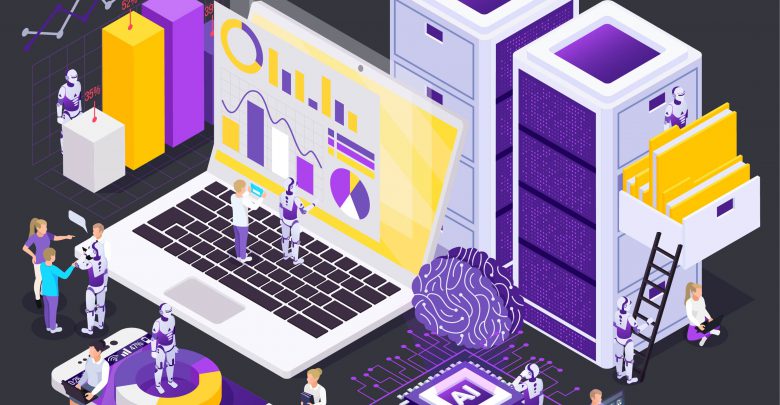How Finance Teams Are Using RPA

Finance and operations make up a core part of any organisation’s daily activities. These activities are highly manual and demand a great deal of focus and energy to process correctly. Handling information from paper or scanned documents can be very stressful and costly to execute.
CFOs are being asked to adapt to the ever-changing business landscape and come up with innovative, low-cost and time-saving models to address these challenges. Robotic Process Automation (RPA) is playing an essential role in achieving these objectives and is a cornerstone on the CFOs agenda.
How RPA fits into finance
RPA can mimic the human execution of computer tasks in the finance department via existing computer user interfaces. The software can be adopted to act as an interface between various financial and operating systems and used to automate repeatable finance processes and data maintenance tasks. This results in faster processing at significantly reduced costs. Costly finance resources can be redeployed to more strategic and value-adding pursuits.
Click here to learn more about Robotic Process Automation.
Let’s look at some of the critical processes in finance that can be easily automated with RPA software:
Procure to Pay (PTP)
Procure to pay involves multiple steps and processes, most of which can be automated in some way by the ERP system. However, there can be gaps in these processes or can be very costly to automate using back end integration methods. For example, many companies have invoice portals that streamline e-invoicing. But when new suppliers are onboarded, the process remains manual.
With RPA, a robot can be implemented to vet new suppliers by following specific rules for validation. Instead of depending on a person to log in and out of portals, a robot can be leveraged to connect to all the existing portals and automatically gather or post information as required. The same robot can make necessary updates as and when changes happen, and vet credentials of suppliers periodically to ensure compliance.
Robotic Process Automation (RPA) is an excellent fit for the automation of accounts payable (AP) processes. It allows companies to streamline their AP tasks by infusing robotics into existing processes, which can increase the speed and accuracy of activities while reducing costs.
A robot can monitor inboxes for invoices received, extract the data from PDFs that can be validated against purchase orders in the system and if required against GRNs. The robot can then email the approver as required who can reply to the robot with the approval before the robot processes the invoice into the ERP system.
RPA can save a lot of time for AP employees and reduce overall AP cycle times. Employees are still in charge of their work, but they have a robotic assistant for help.
Click here to access a video of an automated AP process and the related case study.
Order to Cash (OTC)
Inaccurate or delayed order to cash (OTC) processes can prove to be very costly to organisations. Dissatisfaction with being unable to order or receive products as per expected standards can lead to frustrated customers. This in turn can impact retention and revenue levels. Rectifying these mistakes internally might require looking at a range of data from customer returns, inventory, delivery errors and issues etc.
These gaps in the OTC cycle can be filled with RPA. The implementation of RPA shifts the focus more towards automating processes that require manual supervision such as contract and order management, order fulfilment, delivery execution, invoice management and managing payments. Once these processes are automated and carried out with a hundred percent accuracy, employees can focus on creative processes to enhance sales and increase customer satisfaction levels.
Case Study – The customer care representatives (CCR) of a wholesale and retail trade business were manually extracting data from PDF order forms into their customer order system. The CCR’s were spending more than half of their day a couple of times a week processing these transactions. During busier periods, they could spend over 60% of their week processing these orders.
With a robot, the manual tasks of the customer care representatives were automated. The robots extracted and validated the PDF order details before processing the transaction in the customer order system with greater accuracy and significantly reduced time. The customer care representatives now had more time to focus on advising customers on offers to increase sales and building better customer loyalty.
Record to Report (RTR)
Record to report as a process provides financial, strategic and operational feedback on how a business is performing. This encompasses all the tasks and processes, from closing out sub-ledgers to creating and delivering financial filings to regulatory bodies, all of which involves the work of several departments and individuals.
This process requires a lot of data extraction from excel and csv files throughout departments and divisions. This data needs to be aggregated and made sense of how the company is faring operationally and financially. But collecting, processing, and delivering that information in a timely manner can be a real challenge.
A robot can take over the heavily manual aspects of the job and extract and generate accurate reports for correct analysis. The process requires posting data from sources such as excel to these sub-ledgers, a tedious undertaking that RPA can mitigate.
Case study – The finance team of a construction company was responsible for data extraction and reporting via their ERP, Excel, and a standalone database. The high volume of the business meant that the business had over a gigabit per day of data that took almost 1.5 hours to process.
This process was fully automated with a robot in 3 weeks, with a 150% ROI. The robot reduced the processing time by 70% with 0% errors with no manual intervention letting the team concentrate on higher-value processes.
Master Data Management (MDM)
As organisations scale, master data management starts to become a challenging part of any finance process. If done manually, it can be a herculean task involving several different systems. Robots can be used to manage, monitor and sync multiple systems. This can be done with greater speed, accuracy and compliance than manual processes.
Robots can consistently assign categories and attributes to master data records that provide better accuracy and enhanced profitability and spend analytics on customers and vendors, which can improve services and enhance value.
Case Study – A manufacture’s vendor master data management process was extremely manual involving several tax validations and other organisational pre-checks through various websites. Their workflow also included master data preparation for processing in their ERP system.
A robot was developed to mimic these manual processes to create and maintain vendor records on a regular basis, ensure compliance and delivering significant productivity gains through reducing manual work and the volume of rework that previously occurred.
Conclusion
Unfortunately, many finance teams continue to be limited by legacy processes and systems that hinder their basic accounting and finance operations, but this does not need to be the case as robotic process automation can allow finance teams to become digital transformation leaders.
Robotic process automation can help finance teams at any stage to quickly reap the benefits of this technology. It is not as intimidating or complex as it might seem. In fact, implementations are often completed within weeks with ROI delivered in months, not years.
Finance teams can begin with simple rule-based tasks and scale to more elaborate functions as they grow. An automation-first approach for finance teams is a critical part of the journey to becoming a modern finance function and a strategic step for a finance leader.
Click here to view a video on how RPA is reshaping the finance function.



